#<3 willem dafoe hes a great actor
Explore tagged Tumblr posts
Text
Right. I'm in the rambling mood. So this post is probably going to be a whole load of nonsense, but fuck it I ball. I'm boutta yap to everyone about why I think Norman Osborn is a villain I can't sympathise with.
Let's start this by talking about villains I CAN sympathise with; Otto and Flint. I can sympathise with the other two because they have stories that make me feel empathetic. Flint wants to help his sick daughter, even if it's through illegal means. Otto had effectively a perfect life; a stable career and a loving wife, and he was doing what he enjoyed. When he loses it, it's bound to cause some empathy. Yes, his ambition is the cause of it all, but regardless, he lost practically everything.
With Norman, there's none of this. I don't feel any sort of sympathy. NWH's portrayal of him just makes it seem like his actions aren't his fault. In the Raimi Trilogy, the opposite is true. Norman wants the control, the power, but to accomplish that, he would taint his image. He doesn't want to taint his image because that would simply cause more problems. The serum simply just removed his inhibitions. Having had his inhibitions removed through the Goblin, he can do the things he wanted to do but without tainting his image. Norman lost nothing to achieve his goals.
But then you wonder, "Why didn't the same happen to Harry?"
It's because Harry had one goal in mind; kill Spider-man. He didn't want to harm anyone else, just him. Norman didn't care who he hurt, whereas Harry only wanted to harm Peter/Spidey.
Besides this, Norman was generally a bad father, too. That helps us sympathise much less.
Anyways, thanks for listening to me ramble, I had to get my thoughts out before I don't get any sleep ;-;
#spiderman#spiderman 2002#spiderman 2 2004#raimiverse#raimi trilogy#peter parker#harry osborn#otto octavius#flint marko#norman osborn#kats little rambles#ramblings#I AM ANTI NORMAN OSBORN RN.#this is an anti norman osborn post because he is unlikable#not willem dafoe tho#<3 willem dafoe hes a great actor
41 notes
·
View notes
Text

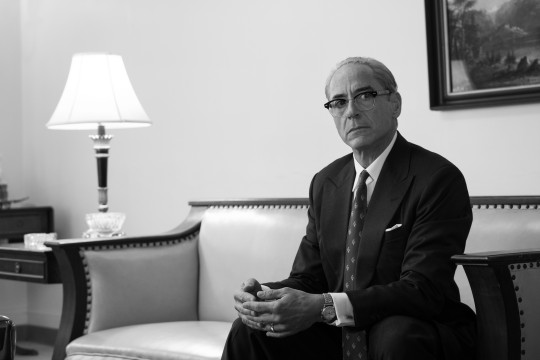
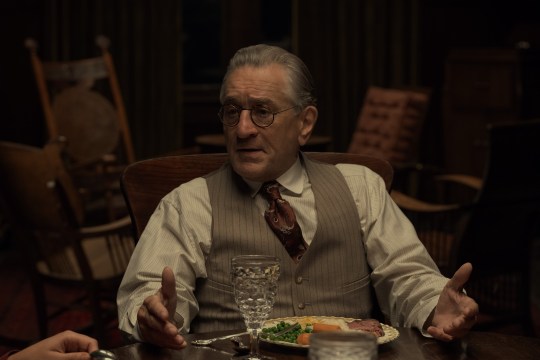
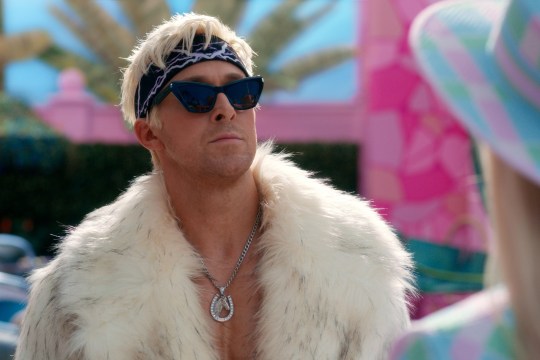

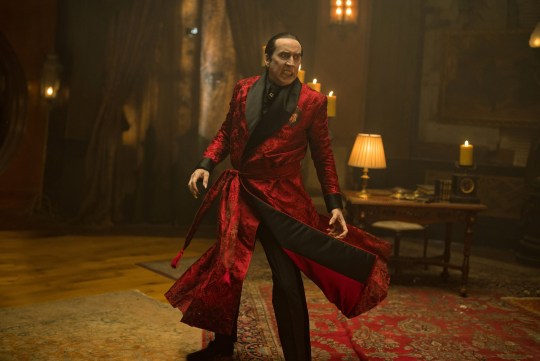




My Best of 2023: Supporting Actor
My Best of 2023 is a series of annual lists in which I pick the best of the best from 2023, all leading up to my official picks for My Top 10 Films of 2023.
This is usually my most difficult category… and almost always my favorite. This year's different. Yeah, Mark Ruffalo delivered one of my very favorite performances of the year, period. But the rest - aside from 8-10 - aren't really in any locked order, despite all delivering great, scene-stealing performances. Both Roberts turned in phenomenal, complex, villainous performances. Downey honing in on his character's ego, and De Niro nailing his character's evil entitlement. Gosling was an absolute blast in Barbie. But he was just Ken, so.... Willem Dafoe was wonderfully weird, but should've gotten more screen-time. Same goes for Cage, whose Dracula really should've been onscreen for every single second of Renfield's running-time. I'm not super familiar with Sterling's work, but I didn't know he had such impeccable comedic delivery. And the final three are all young actors who - much to my surprise - show little to no ego in the way they brought these characters to life. Again, all of these are truly great performances, it's only the order that - for once - has me completely lost (Okay, the Top 4 or so are pretty solid, but after that? Forget about it.)... but I guess this is close enough. Oh, and I have this gut feeling I'm completely forgetting someone I absolutely loved. There's that, too.
Anyway, here they are…
My Top 10 Performances by a Supporting Actor in 2023!
1. Mark Ruffalo in Poor Things
2. Robert Downey Jr. in Oppenheimer
3. Robert De Niro in Killers of the Flower Moon
4. Ryan Gosling in Barbie
5. Willem Dafoe in Poor Things
6. Nicolas Cage in Renfield
7. Sterling K. Brown in American Fiction
8. Jacob Elordi in Priscilla
9. Dominic Sessa in The Holdovers
10. Charles Melton in May December
Enjoy!
-Timothy Patrick Boyer.
Next Up: Directing; Lead Actress
More of My Best of 2023...
#film#movies#best of 2023#poor things#mark ruffalo#oppenheimer#robert downey jr.#robert de niro#mybestof2023#killers of the flower moon#ryan gosling#barbie#willem dafoe#nicolas cage#renfield#sterling k. brown#american fiction#priscilla#jacob elordi#dominic sessa#the holdovers#charles melton#may december#movie#cinema#lists#etc.
13 notes
·
View notes
Note
18 for the ask game :3
18. favorite actor
not to be basic, but i fucking love willem dafoe. he's just so great in everything and is so so so good at inhabiting an unlikeable character while still being extremely compelling and interesting. honorable mentions for daniel kaluuya, andrew garfield, and dev patel
2 notes
·
View notes
Text
Early live action adaptations of Marvel Super villains
So we all know about the big and small screen marvel villains:Your Tom Hiddleston as Lokis ,your Ian Mckellens as Magnetos, your Willem Dafoe Green Goblins....I wanted to see who were the earliest Marvel villains adapted into live action .
Some of these I have seen some I havent .
Rule-
1.Live action villains only
2.Cutoff is 1999,only 20th century baddies here
3.Only villains from the comics ....Though I do have two honurable mentions
Jessica Walter as Morgan Le Fey-Doctor Strange (Still havent seen this but yeah turns out she is the first live action version of a marvel super villain)

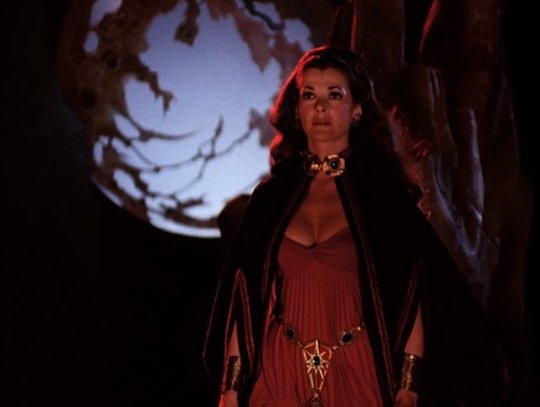
John Rhyse Davies as Kingpin -TRial of the Incredible Hulk (A good Kingpin ,goes more for the mastermind side but lacking the imposingness of later versions.Not my favorite Kingpin but John Rhyse Davis is a magnificent actor )

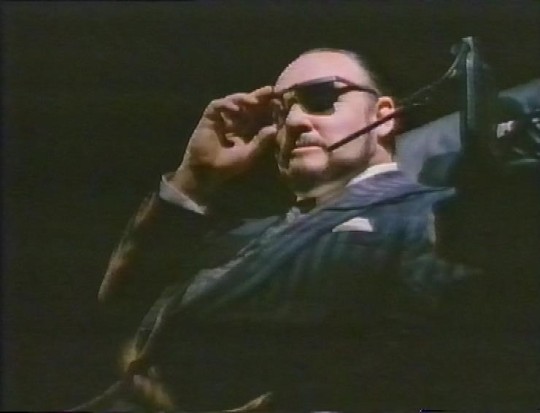
Scott Paulin as Red Skull -Captain America (SCott Paulin is great here ,he is a menacing presence and I love his initial design.....Let down by the "Plastic surgery look" he has the ret of the film,also cause the film is bad )


Joseph Culp as Doctor Doom -Fantastic Four (DEspite the fact his voice is muffled alot so its hard to understand him,I like how faithful the costume ,I dig the grand gesturing and I love how jovial he is ,hes always laughing bout something ,I think he is my fave of the early Marvel movie villains )


Sandra Hess as Andrea Von Strucker /VIper(Combined into one character ),and Peter Haworth as Arnim Zola -Nick Fury (Apparently Baron Von Strucker and Wener Von Stucker are in it too but I couldnt find images.Also I've never finished this movie )


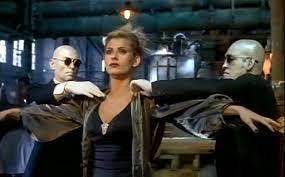

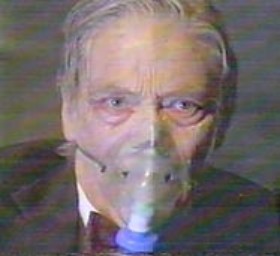
Stephen Dorff as DEacon Frost -Blade (DOnt know anything bout his comic counterpart......But I love the movie version of this guy.Love this asshole )


And in the "I dont know if this counts "honourable mentions
Brian Thompson as Kabal/Baron Mordo -Doctor Mordrid (SO I have heard from various sources this was either going to be a Doctor Strange movie OR it was inspired by Doctor Strange,either way ,Kabal is a clear stand in for Baron Mordo .Either way film is pretty fun and Brian Thompson is a fun villain )
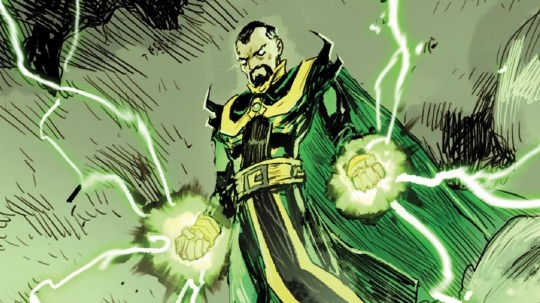
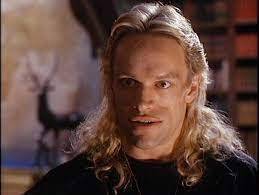
Ian Trigger as the Jeweler/Mole Man-Fantastic Four (This I know for a fact was supposed to be the Mole Man.....But Marvel wouldnt let them use the Mole Man ,so they just called him something else .I do like Ian Triggers performjance,but I feel like they shouldve cut him out OR made him the main villain )
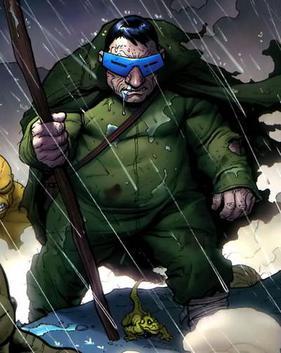

I might do this for 20th century villain DC villains,I dunno this was fun
Do any of you have thoughts on these early Marvel Movie villains?Feel free to share your thoughts
@ariel-seagull-wings @theancientvaleofsoulmaking@princesssarisa @the-blue-fairie @amalthea9 @angelixgutz @goodanswerfoxmonster @themousefromfantasyland @filmcityworld1
20 notes
·
View notes
Text
Spider-Man and his Amazing Friends S1 P1

Hey hot stuff

THEY LIVE TOGETHER?!
The opening has a great theme and we start with a Green Goblin episode, I'm ON. BOARD.

This show is already so funny.
They say they have a date, and when they say they have to get to the "girls, fast!", lightning interrupts them. It means they're actually gay.

Norman Osborn. He's totally sane.
His voice actor is great.

AUNT MAY?!

This adorable dog is named Ms. Lion.
I'm SO vibing with the soundtrack.

No context
The Green Goblin actor is channeling Willem Dafoe, but of course, this show came out much earlier... two decades earlier!
Norman has a niece, Mona. She studies at ESU!
I love the sound effect for Iceman's powers.

THIS SHOW IS SO FUNNY

Unfortunate

They're hugging <3
Contrary to the Spider-Man 3 game, this show doesn't forget that Spidey can't shoot his web at buildings in Central Park.

Norman Osborn in a pin-up pose!

That you are, honey.

HE'S SO PRECIOUS

I've had Ms. Lion but if anything happens to her I will do something

Episode 2. Incredible.

With a Stan Lee cameo?

Bobby has performance issues.
THEIR RENT IS 50 DOLLARS

LOOK AT THIS HOT CAST
I kind of love what I watched
Maybe I'll watch the rest, who knows? Peter's prettiest animated appearance certainly helps.
0 notes
Note
Same anon from the movie question: you're a Heath Ledger fan? Who are your other favourite actors?
I love these film related questions 😭
So here are my top actors. Some of them I have seen most of their filmography and others only a little but still think they are remarkably talented and/or entertaining. The favourites I’ve listed are purely about their performances, not necessarily the films themselves.
1) Heath Ledger. Obviously. I have loved him my whole life and I can barely think about the man without crying. He was phenomenal and could do anything. I’m so sad he didn’t get to see his own Oscar win. Favourites: 10TIHAY, A Knight’s Tale, Brokeback Mountain, The Dark Knight
2) Jake Gyllenhaal. Give this man an Oscar already. Every few months I suddenly remember his filmography exists and rewatch as much of it as I can. Favourites: Brokeback Mountain, Zodiac, Prisoners, Donnie Darko, Nightcrawler, Love & Other Drugs, (I could list several more)
3) Nicolas Cage. Okay so maybe he’s not the best actor in the world but I will watch anything this man is in. And I mean ANYTHING. Favourites: National Treasure, Knowing, TUWOMT, G-Force, Spider-Man: Into the Spider-Verse
4) Pedro Pascal. Another obvious one. He’s so good and I’m so glad he’s getting so much appreciation at the moment. Give him an Emmy please. Thank you. Maybe not the first that comes to mind when you think of “great actors” but certainly should be. Favourites: Prospect, TUWOMT, TLOU, The Mandalorian, Kingsman: The Golden Circle, Narcos
5) Viola Davis. I cry every time she cries. She always hits me right in the gut and you can feel every ounce of pain. She’s EGOT for a reason. Favourites: HTGAWM, Prisoners, The Help, Fences
6) Angela Bassett. You know you’re going to see a good performance when Angela Bassett appears on your screen. Favourites: Black Panther: Wakanda Forever, 911, AHS
7) Paul Dano. Soft-spoken and constantly being beat-up on screen. And yet he’s incredible every time. Favourites: The Batman, Little Miss Sunshine, Love and Mercy, Okja, There Will Be Blood, Prisoners, Swiss Army Man
8) Samuel L. Jackson. Every time this man says “motherfucker” I smile uncontrollably. Favourites: MCU, Pulp Fiction, The Incredibles, Star Wars, Kingsman: The Secret Service, Snakes on a Plane
9) Queen Latifah. Brings a certain energy that cannot be matched. Favourites: Chicago, Hairspray, Ice Age
10) Lucy Liu. I fell in love with her when I saw Charlie’s Angels for the first time. Favourites: Charlie’s Angels, Kung-Fu Panda, Chicago,
11) Michelle Yeoh. She’s just cool, man. I don’t know what else to say. Favourites: Shang-Chi and the Legend of the Ten Rings, Last Christmas, Reign of Assassins
12) Jeff Goldblum. He plays every character the same but IT WORKS and I love it every single time. Favourites: The Fly, Cats & Dogs, Thor: Ragnarok
13) Willem Dafoe. I never intentionally watch films with him in them but always get a million times more excited when he shows up in them. Favourites: Spider-Man, American Psycho, The Great Wall
14) Joe Mazzello. Underrated actor honestly, deserves a lot more appreciation and better roles. Petition to get him a better agent. A lot of his work as a child are great as well. Favourites: Bohemian Rhapsody, Jurassic Park, The Pacific, Undrafted, Dear Sidewalk, The Cure
15) Leigh Whannell. The guy is Australian and plays whiney, pathetic characters. What’s not to love? He’s also a great writer and director! Favourites: Saw, Dying Breed, Cooties, Insidious
1 note
·
View note
Text
Oh, right. No Way Home drops in ten days. Here are my takes on the past Spider-Man movies, then, I guess.
If you want me to explain myself, by all means, go ahead and ask. Just don’t expect me to care if you don’t agree with my takes.
Spider-Man (2002) - 6/10 Spider-Man 2 (2004) - 4/10 Spider-Man 3 (2007) - 6/10
The Amazing Spider-Man (2012) - 7/10 The Amazing Spider-Man 2 (2014) - 5/10
Spider-Man: Homecoming (2016) - 8/10 Spider-Man: Far From Home (2018) - 6/10
Spider-Man: Into the Spider-Verse (2018) - 10/10
Venom (2018) - 3/10 Venom: Let There Be Carnage (2021) - Haven’t seen it yet, don’t care enough to change that.
EDIT: Explained myself below.
EDIT 2: I have now seen both No Way Home and Let There Be Carnage, and I have also re-watched the other movies on the list after seeing No Way Home. The updated list, for those who care, can be found here.
Before I say anything, let me preface this by saying that I have no nostalgia for the Raimi films. I didn’t grow up with them, so I don’t have any rose-tinted glasses on for these.
I’d also like to say that I don’t think any of these movies are truly bad. There are just some I like more than others.
That being said, Spider-Man (2002). It’s alright. Not great, not horrible. Just a decent, middle-of-the-road comic book movie. Willem Dafoe and J.K. Simmons are the obvious highlights when it comes to performances, and there’s nothing I can say about them that hasn’t been said already.
Spider-Man 2, though... I just did not enjoy this movie as much as the first or third ones. Peter is a spineless coward who immediately rolls over and shows his belly every time somebody snarls. Harry is a drunk, short-sighted asshole. MJ is training to earn the coveted “Most Emotionally Abusive Character” award. And no amount of half-baked monologues can save Aunt May’s blatant character assassination. The only times I actually enjoyed the movie I was watching was when Doc Ock or Jameson were on screen. This movie is also when I realized that (and this one is entirely personal) I just don’t like Tobey Maguire’s acting. It just doesn’t vibe with me unless he’s angry.
That’s something that makes Spider-Man 3 surprisingly much more enjoyable than Spider-Man 2 ever was. "Heresy!" I hear you say. To which I respond, "I don't care." I know what I like and what I don't like, and I sure as hell won't force myself to pretend to like something I don't like at all. Spider-Man 3 is easily my favorite of the trilogy because it just has more content to enjoy. The half-assed abusive friendship between Peter and Harry is gone. MJ actually has reasonable justification for why she's such an asshole to Peter. Peter himself grew some of his spine back, and proceeds to grow ALL of it back when he gets the Black Suit. Aunt May is a good person again who doesn't abuse random people for literally no reason. However, there are still things I don't like. Thomas Haden Church is a great actor and does a great job as Sandman, but the guy seriously needs to show more emotion. His expression just does not change and it's kind of distracting when his face does the exact same thing in every scene. There's nothing to say about Topher Grace as Eddie Brock/Venom that hasn't been said already, and the same applies to New Goblin, Emo Peter, and all the other stupid shit in this movie. I do have my own separate tangents on why I like the New Goblin and Venom designs for this movie, but those are best saved for another day. I'm also a shameless slut for the Black Suit Spider-Man theme in this movie.
The Amazing Spider-Man. What a pickup line. After the Raimi Trilogy featured a character I couldn't even pretend to be able to relate to, revisiting Andrew's Peter Parker felt like such a breath of fresh air. He felt much more like an actual human being to me in this movie, and much more like someone I would've known in school. The difference in CGI quality between this and the Raimi films is like night and day, and the Spider-Man suit in this film is easily in my top three favorite Spider-Man suits of all time. I'm also an unironic fan of the design for the Lizard in this movie, too. It keeps human-like proportions and doesn't change bone shape and structure to give the Lizard a snout that he realistically should never have gotten. I also just really like the attention to detail in his fingers; Connors' missing arm regrows with four fingers instead of five, and when Captain Stacy shoots his other hand during the final battle, it too regrows only four fingers. It's just a great detail and I love it. That being said, though, there is plenty of stupid shit in this movie. Unfortunately, there's nothing I can say that hasn't already been said.
And that also applies to The Amazing Spider-Man 2. Christ, this movie is a mess. A jaw-droppingly beautiful mess, but still an absolute mess. It's overstuffed beyond belief, to the point where I'm baffled that this movie even got made in the first place. Everyone knows about the stupid shit in this movie. Everyone knows about the good stuff in it, too. And while I can definitely appreciate the near-flawlessness of the Amazing II Suit, something about it just feels... bland. It isn't doing anything new, it's not doing anything that makes it stand out from other versions of the Classic Suit. It's not bad, but it's just not that visually unique. Not that it really matters, because this is the most beautiful dumpster fire of a movie I've ever seen.
Spider-Man: Homecoming, while definitely the most mediocre Spider-Man movie, is still probably my favorite of the live-action films. While Andrew's Peter Parker felt more believable as just someone I would know in school, Tom's Peter is one I can personally relate to a lot more than the other two combined. Granted, that can only go so far, there are still things I don't like in this movie. Much like many others, I'm not the biggest fan of how consequences are handled in this movie. I do like it much more than Spider-Man 2, where even sneezing incorrectly shuts down all of Peter's hopes and dreams, but it doesn't feel like the consequences are fitting for what happens to cause them. The excessive CGI, while not distracting, is also definitely an issue and I really wish the MCU would knock it off. The expressive lenses and visibly-moving jaw are more than enough, you don't need to shrink-wrap Spider-Man's suit onto his body this much. Vulture is also just a mediocre villain to me. He's not bad, don't get me wrong, and he's definitely one of the better parts of MCU Spider-Man as a whole, but they never really do anything all that unique with him outside of the badass look.
Spider-Man: Far From Home was fantastic on a first viewing. But much like with countless other Marvel movies, watching it multiple times really makes the cracks easier to see. The love triangle sub-plot is a crack the size of the Grand Canyon. Axe that from the movie and it would probably get a better score from me. Apart from that, same gripes as with Homecoming, and not much else I can say that hasn't already been said.
Spider-Man: Into the Spider-Verse. That's it.
Venom. That's it.
#spider-man#spider-man 2#spider-man 3#the amazing spider-man#the amazing spider-man 2#spider-man homecoming#spider-man far from home#spider-man no way home#tobey maguire#andrew garfield#tom holland#spider-man into the spider-verse#into the spider-verse#across the spider-verse#miles morales#peter parker#eddie brock#venom#venom let there be carnage#spider-verse#tom hardy#willem dafoe#alfred molina#topher grace#thomas haden church#rhys ifans#jamie foxx#michael keaton#jake gyllenhaal#cletus kasady
88 notes
·
View notes
Note
4, 7, 19! <3
sami!! helloooo
i already answered 4. (i said it's fantastic mr fox) BUT i can tell you one movie that i think defined this year and that would be NOPE by jordan peele. the man knows how to make good af movies! :)
7. favourite actor this year? - i feel like this is a common, mainstream answer, but her performance in stranger things this year really moved me a lot, so it's definitely sadie sink! i think she is a very vulnerable actress and i like how she is not talking about acting like it's a mystery or that there have to be special, secretive methods to become a great actor. also, she seems to be a real sweetheart, i would like to be her friend, actually! some honourable mentions: daniel kaluuya, willem dafoe (but he is my fave every year so), barry kheogan, lakeith stanfield & anya taylor joy
19. what are you most excited for next year? - hmm maybe that i'm about to be more chill about certain things? also, i have my internship at a local theatre in february! the film i worked on comes out next year AND i am going to 2 concerts! :)
5 notes
·
View notes
Note
Here’s my opinion on the movie and this will have spoilers so please tag it with a warning!
1. It was a great movie and I loved it, probably the most re-watchable marvel movie along with homecoming. The nostalgia value, the fan service was done for a purpose and it was great!
2. May’s death scene left me speechless and I was holding my breath. Tom’s acting in that scene is just brilliant! But the saddest scene for me was when happy didn’t recognise him at May’s grave. That really hurt me.
3. Andrew really brought the best, him saving MJ, cracking Tobey’s back, saying “I love you guys” like he was just really the most wholesome Spiderman of the three!
4. THE VILLAINS?? Jamie foxx and willem dafoe? And Alfred Molina? They were so so good returning to roles they did years ago! Willem in the scene telling Peter that he is the one who killed may, so menacing, so so good.
5. Tom? The action, the emotion, the love, he can express everything with his eyes and and face! I’m glad he didn’t have to wear his mask all the time since his identity was already leaked so we got to see him fight without a mask too. I was really blown away by him. This is what a good script can bring out in an actor too!
6. Mj and Ned were definitely given a more important role in the movie. Ned going magic and his lola was great. Zendaya brings zero emotion to mj, like miss Ma’am your boyfriend has twins from another universe be a little shocked? Also why are they revealing that her last name is actually Jones-Watson in this movie?
7. Lastly I wish dr strange had a bigger role than just doing a spell because Tom and Benedict had a great chemistry and their back and forth was really fun to watch.
Also I think they had to edit out a lot of stuff so I think there will be an extended cut and I can’t wait for that!
*SPOILERS FOR SPIDERMAN*
Omg I cried with May's death that whole scene was so heartbreaking his acting was perfect on that and the scene where Happy shows up and sees her dead also kills me, and the fact that he didn't remember Peter breaks my heart too, bc I was genuinely hoping somehow he would, and Andrew was amazing I'm gonna be honest I never paid much attention to his Spiderman but in this movie it made me want to re-watch all of his Spiderman movies, him saying I love you to them 😭, and then that conversation about being amazing, it was perfect, and the villains were just wow, it felt very nostalgic but it didn't feel like they were bringing them back and ruining them in the process with this movie they did such a good job, and also can we just talk about how in the end Ned just walked past Peter and didn't recognize him (obviously) that broke me again
9 notes
·
View notes
Note
Willem Dafoe since you rlly like this game (same anon as gene hackman) :)
You're officially my favorite anon now, okay? 😁 I could do this all day, not gonna lie haha. Thank you for another great ask ❤
1) How many movies I've seen him in: 15... which i way more than I expected. And going back through his filmography, I realized he was in 3 movies with David Bowie. Wow. Also, I only found out he was in Finding Nemo and Spider-Man maybe three weeks ago. I’ve known him for so long and yet I was living under a rock 😆
2) How I feel about his acting: He’s a terrific actor, of course, but then there are his facial expressions and that distinct voice that all make his performances positively captivating. Like he’s one of those people you see once and never forget them. Maybe I’m not the best person to say that though, having seen so many of his movies haha.
3) How I feel about him as a person: I know I say this about most of these actors, but you guys are just sending me great people to talk about - anyway, I really love him. He’s funny in a goofy kind of way, which is one of the best types of funny. Not to mention he’s just iconic 😍
4) My favorite role he played: Jopling in The Grand Budapest Hotel. The movie’s cute and he’s actually really funny, but he scares me every time I watch it. Come on, someone who throws a cat out of the window is the definition of a bad guy, right?
5) My least favorite role he played: I don’t even know if the character has a name, it’s just a guy in one scene in The Hunger. I don’t even remember if he had a line or anything, so here we go XD.
4 notes
·
View notes
Text
Watching Snyderverse Part 3 - Zack Snyder’s Justice League
After BvS, I was honestly not particularly looking forward to Justice League. For me, it was obvious that Snyder’s versions of these characters and his overall doom and gloom approach was not something I was particularly enjoying despite some promising elements in both MoS and BvS. Then we saw exactly how JL production went down. Despite the happy face they tried to paint, the fact that there was going to be a 2 hour mandate, the fact that Whedon basically reshot a bunch of Snyder’s film with the film being a mishmash of two directors who couldn’t be any more different in their sensibilities, and that that the actors, specifically Ben Affleck, looked like they couldn’t wait to be done with this movie and this role, made it obvious that the movie wasn’t going to turn out well. So my expectations were rock bottom for the theatrical cut. As it happens, that was a good thing. The theatrical cut of JL is a thoroughly unremarkable movie. I don’t abhor it but it is so obviously a patchwork job and a studio mandated film that there is no passion or vision in the movie at all. I mean, I didn’t like BvS much at all, but there was a vision there. Theatrical cut of JL seemed like a film that felt like WB just felt they had to put out there and then move on. And then years later, we get Zack Snyder’s full version of Justice League. I watched it in one sitting, which was maybe a mistake because it is heavy viewing for 4 hours. Without a doubt it is a better movie than the theatrical cut. Its a little tough to judge this film because this is no way a movie that would have been released theatrically. But its also impossible to judge on what it may have been if it was edited down to a 3 hour length. So best to just judge it on its own merits.
Firstly, the positives. This is definitely a more coherent and clear movie. The plot is not rushed and every sequence, be it a character moment or an action sequence, is fully realized without any weird edits. The film does have some more humor than the previous two Snyder films. Mainly courtesy of Ezra Miller and Jeremy Irons. And the humor is not awkward like in the theatrical cut. Ezra Miller in particular benefits from that because some of his cringey lines from the theatrical edition are cut. The special effects are largely impressive and definitely an improvement over the theatrical edition. On a character level, definitely Cyborg gets the most benefit out of all the characters. As we get a full and thorough backstory for him. We get insight into his relationship with both his parents. Steppenwolf also gets significantly more screen time and his motivations are definitely more clearly defined in the movie than in the theatrical. Miller and Momoa also get some more scenes to flesh out their individual characters. What does surprise me is that the film contains a lot of scenes which are essentially just alternate versions of scenes from the theatrical cut. The film isn’t radically different from the theatrical version, but the scenes included in this version feel a little more real. Like a scene with the entire League discussing Superman’s return in the theatrical cut made it obvious that the actors weren’t in the same room together, whereas the original scene in this movie has them clearly in the same physical space. The Superman scenes are also infinitely better without the CGI upper lip. Thankfully, Snyder doesn’t do what he did with the previous two movies and gives some breathing room between action sequences. Probably a bit too much time, but that’s better than no time at all. the tunnel action sequence and the climax set piece is definitely pretty cool. Flash actually having an active role in the climax was a big improvement. My favorite action sequence is still the Superman vs the League because it shows just how powerful Superman can be. Also, the color palette is a lot more consistent and better than the weird bright and red color palette that is used in the theatrical cut.
When it comes down to the performances from the cast, nobody really stands out. They are all fine, but unlike in BvS, where Affleck stood out. Everybody here is just motoring along. In the theatrical cut, Affleck looked completely checked out. I was hoping the original cut would beef up his performance. While it is slightly better, he’s still just a bit too restrained in the role and doesn’t leave the type of impression he left in BvS. Everyone is at their most dour self. Gal Gadot’s WW is more serious and therefore does not get to show her more radiant side in Patty Jenkins’ movies, Momoa is also similarly more dour and serious and not quite as fun as he was in Aquaman. Ray Fisher is decent but its a role that requires him to be very robotic for large chunks of the film. So its a little difficult to assess his performance. Cavill is in far too little of the movie to give much of a performance. He’s perfectly fine in the handful of scenes he has. Miller is probably the best of the lot, even though he’s still more Peter Parker than Barry Allen. Some of the supporting cast actually fare a little better. Irons is a delight whenever he’s on screen and Affleck is also at his best when they have scenes together. That dynamic works. Joe Morton is surprisingly affecting as Silas Stone, as is Billy Crudup in his brief scenes as Henry Allen. Its always nice to see more of Willem Dafoe, Diane Lane, Connie Nielsen, and JK Simmons. Simmons as Gordon was great casting and its a pity we won’t get to see more of him in that role. Amber Heard for some perplexing reason has a British accent in this film as Mera. Given Dafoe and Momoa both speak in their normal voices, that must have been a choice. It did feel a bit funny. Jared Leto and Jesse Eisenberg are back as Joker and Lex and neither of them particularly improve on their performances. I mean, they have a scene each so its no harm done, but the Joker scene particularly drags on for too long. Amy Adams has a small role and she does manage to make to get some emotion out of a handful of scenes.
The film has more than its fair share of issues. Firstly, it is just way, way too long. The pacing is glacially slow at times. And I mean that in the most literal manner. There is so much slow mo in this movie, its crazy. I swear, if you removed the slow motion, you might lose 20 minutes of the run time. Snyder is clearly in desperate need of an editor here. The film has the exact opposite problem of the theatrical cut. Whereas in the theatrical cut, it always felt that every scene was just edited a little too short, in this movie there are scenes that are going on for far too long. There are some very strange edits. Like an entire scene where women in the village are singing hyms when Arthur leaves and smelling his clothes. There is a meet cute between Iris and Barry which is completely unnecessary and is frankly slightly creepy where Barry is caressing her face while she is in the process of being thrown out of her car. Some music choices in these scenes are also a little bizarre. Everything involving the Martian Manhunter is not necessary. I mean, his involvement in a crucial Martha and Lois scene actually takes away from the emotion of that moment. And then he has a very tacked on final scene which is kind of awkward. The Knightmare scene also drags for a bit too long, especially given they are supposed to be in danger while being out in the open. We still have no more clarity as to why Bruce is having these visions. The slow pace does make things boring at times as well. While I am glad that Cyborg’s backstory gets beefed up, there is a bit too much of Cyborg being angry at his father. After a while, it gets monotonous. The film takes too long to get the team together and the first JL action sequence doesn’t happen until over 2 hours into the movie. The film should have spent a bit more time with the team interacting with one another. That’s what made the Avengers movies work and some of the best parts of this movie are also the team together. There are some Snyder tone deaf moments as per usual. While WW’s entry action sequence is very cool, I do find it funny that they have her comforting a girl and the girl wanting to be just like her after she basically obliterates the terrorist into dust. Given her abilities shown in that sequence, there is no reason she wouldn’t have been able to disable him. But instead she just obliterates him. Its all very Snyder. I do also have to wonder about that sequence. I still don’t get exactly how terrorists feel that blowing up a few city blocks will bring down the modern age. I thought this was a weird Whedon thing but it turns out to be a weird Snyder thing. Also, for all the hype about the black suit Superman, its really nothing more than an aesthetic choice for no rhyme or reason. I honestly prefer the Blue and Red if the black suit doesn’t have a point, like the restorative factor from the comics. Also, for all the blame people put on Whedon about the skimpy outfits on Amazons and the weird backside shots of WW, turns out they were all Snyder. There are a few select things that the Whedon cut did slightly better. For example, there is no real major debate or conflict within the team other than minor objections from Arthur over the implications of using the mother box to bring back Superman. Also, a sequence in the theatrical cut where Bruce admits that Clark was more human that he was, is a better version of a similar scene in this movie. Also, while not perfectly executed, the theatrical cut did acknowledge that Bruce was a human fighting amongst superpowered individuals. Also, most importantly, while Steppenwolf is an improvement over the theatrical cut, this is still a movie where the plot involves a villain trying to find three boxes. Steppenwolf is still pretty boring and the main story is not interesting at all. The Darkseid angle of this story is also overhyped since he’s barely in the film.
In the end, it feels that there is a pretty decent 3 hour movie hidden in an ok but dragged out 4 hour film. I’m glad the Snyder fans got to see it. I have had my issues with Snyder’s vision. While I feel he has grand ambitions and a sense of scale and scope, he hasn’t really got the sense of story and script to really make it work to a degree where the audience at large would appreciate it. I have seen his old storyboards and read his recent interviews about what he was going to do. It sounds very grand and very cool, but with a big potential of being a gigantic mess. Who knows what will happen in the future but at least it right now seems that they are moving on from Snyder’s vision. For this film, I am right now landing at about a 6/10, which is the highest mark out of all the Snyder DC movies. I’ve only watched it once and watching it again is a big endeavor so I won’t do it anytime soon, but maybe revisiting it will make me either like it more or less.
#zack snyder#zack snyder's justice league#justice league#batman#superman#wonder woman#aquaman#the flash#cyborg#ben affleck#henry cavill#gal gadot#ray fisher#jason momoa#ezra miller#snyderverse#jeremy irons#amy adams#diane lane#jk simmons#jared leto#joker#jesse eisenberg#lex luthor#lois lane#steppenwolf#darkseid#willem dafoe#amber heard#mera
10 notes
·
View notes
Photo

Movies I watched this week - 37
Robert Bresson’s philosophical Pickpocket, inspired both by Raskolnikov from ‘Crime and Punishment’ and by Camus ‘The Stranger’. And in turn it inspired Paul Schrader, the other conflicted Christian filmmaker. Austere and mysterious.
✴️
And so 3 by Paul Schrader (all starring Willem Dafoe):
✳️✳️✳️ The Card Counter, Schrader’s new masterpiece. A tortured soul seeking redemption in a ‘ballet of violence’, just like in many of his previous films. The part of the torture program in Abu Ghraib is tailored a bit too close to the real Mitchell / Jessen psychopaths. But OK. 8+ / 10
✳️✳️✳️ Affliction, a completely different set up: Nick Nolte’s turns into his drunk, abusive father in a cold New Hampshire winter. A sad story of how a family curse is passed through generations, without redemption. His poor daughter...
✳️✳️✳️ Auto Focus, atypical light Schrader pastiche about murdered actor Bob Crane’s friendship with John Henry Carpenter. Crane’s sexual obsession must have been the appeal to Schrader. Told as an uncanny pastel joke, that hides a dark and disturbed core.
✴️
First watch: Sergei Parajanov’s homoerotic The Color of Pomegranates (1969), a stunning visual poem of nearly-ethnographic Armenian tableaux. Reminds me of Jodorowsky. The inspiration to Tarsem’s music video for R.E.M.'s ‘Losing My Religion’.
(Photo above)
✴️
In 1965-66 American-backed anti-communist militias tortured and executed up to a million ‘enemies of the state’ in mass killings in Indonesia.
The Act of Killing is a 2012 terrifying Danish documentary where a group of these now-old death-squad leaders recreate and reenact their actions from that time.
Indonesia, it seems, is not a very enlightened country.
The most original film of the week.
✴️
Sofia Coppola’s Somewhere, a privileged father-daughter drama. A new superstar actor lives at the Chateau Marmont, and spends some time with his 11 year old daughter. Contemplative with Coppola’s usual slow, long shots style, but pointless and bland. The parent-daughter part was OK, but the Hollywood-fame portion was uninteresting. Even the hot pole-dancing Playboy twins were not exiting.
✴️
“Ah, the smell of goulash!���
First watch: Lubitsch’s That uncertain feeling, 1941 erotic comedy, full of sexual innuendos and double entendres that the Hays Code didn’t catch.
“Phooy!”
✴️
Truffaut’s 4th film, The Soft Skin, with Catherine Deneuve’s dead sister, Françoise Dorléac. A married man falls in love with a young stewardess. After 3 New Wave originals, this was derided as a “bourgeois melodrama” and was a commercial failure.
Always with Georges Delerue’s music.
✴️
Orson Welles’s existentialist The Trial, based on Kafka’s novel. Starring unconvincing and too young-looking Anthony Perkins as a man accused of a crime he didn’t commit and which he doesn’t understand. Also with Jeanne Moreau. One literary bad dream with lots of absurdist going-ons. It all hinges on K’s feelings of guilt.
✴️
A different kind of a bad dream, the ultimate Orange County, CA very black “comedy” Very Bad Things. Like ‘The Hangover’, but worst-case-scenario bad.
✴️
Recommended by my mom:
The Hundred Foot Journey, a predictable restaurant-porn about the second Michelin star in a “little, quaint French village”. By Lasse Hallström, who specializes in this kind of international fairy tales, and Oprah Winfrey. Commercial clichés and stereotypical tropes. 2/10
✴️
"You're a cookie full of arsenic"...
Sweet Smell of Success - 2 slimy operators, “publicist” Tony Curtis and influential gossip columnist Burt Lancaster unethically conspire to destroy a jazz musician in a gritty Manhattan Noir. Another sizzling Ernest Lehman manuscript.
✴️
Barry Levinson paid tribute to ‘Sweet Smell of Success’ in his debut feature Diner, with one of the kids wandering around saying nothing but lines from the film. So I watched it again. What a wonderful piece of triple nostalgia (1959-1982-2021). Perfect in every sense, especially when showing unexpected sides to each character: Boogie doing hair, Billy playing the piano, Eddie dancing at the strip club.
“You’re gonna finish this?”
Best film of the week!
✴️
Best Sellers, the new Michael Caine vehicle. He’s a cranky, washed-up, bitter author, who’s drunk the whole time. His orange cat is the only other good thing in this lame “comedy”. With a horrible Aubrey Plaza. 2/10
✴️
2 X Vanya’s:
✳️✳️✳️ The 2020 British stage adaptation of Chekhov’s Uncle Vanya, with Toby Jones as Vanya, and Roger Allam as the professor. It deals with purposeful life, beauty, money, and one of the first discussions of ecological problems in world literature.
✳️✳️✳️ I’m glad I waited to watch Louis Malle’s last film, Vanya on 42nd Street, after the BBC version. Even though it was filmed 26 years earlier, it was much more contemporary. The combined talents of David Mamet, Andre Gregory and Malle modernized the play into a brilliant whole. Wallace Shawn was great! 8/10
✴️
Chaplin’s delightful 1922 Pay Day, first (?) tramp film where he has a (nasty, harping) wife.
✴️
U Turn, Oliver Stone’s sadistic, disgusting and pointless mess. Sean Penn is a permanently unlucky schmuck, who “pulls up to a tiny no place in the Arizona desert”. Bad Tarantino clone.
Thanks a lot for the recommendation, Sammy! 1/10
✴️
Because Norm Macdonald died today, I watched his Dirty Work. A grave mistake! His dry humor was good for a few sardonic one liners, but not for this stupid, sophomoric loser. 0/10
✴️
42 enjoyable minutes of a crash course on fromage, how to cut it and how to serve it.
- - - - -
(My complete movie list is here)
4 notes
·
View notes
Link
https://ift.tt/3l39LwX #

Sam Raimi’s Spider-Man trilogy redefined the superhero genre and the summer blockbuster. The three films provided audiences with a sense of escapism unlike anything they had seen before, thanks to its heart-pounding action scenes and collection of beloved characters.
RELATED: Spider-Man Villains Ranked Least-Most Likely To Win The Hunger Games
Peter Parker, his friends, and his foes all got many chances to show off their abilities on the big screen. Indeed, the trilogy’s characters star in some of cinema’s most unforgettable moments. From upside-down kisses in the rain to heartfelt monologues about the responsibilities of a hero, Sam Raimi’s trilogy has plenty of scenes that rank as some of the most memorable in cinematic history.
10 Eddie Becomes Venom

To say that Topher Grace’s depiction of Venom is unpopular would be an understatement. In fact, most fans agree he was one of the things Spider-Man 3 got wrong. That doesn’t mean his character didn’t have some thrilling moments on-screen, though.
Eddie’s most memorable scene in the movie is his transformation into Venom. As Peter gets rid of the symbiote while in a belltower, the alien falls and lands on Eddie, quickly overtaking him. A killer soundtrack and fittingly gloomy atmosphere accompany the transformation. And even if Eddie ended up being an underwhelming villain, his conversion into Venom is definitely memorable.
9 Flint’s Confession
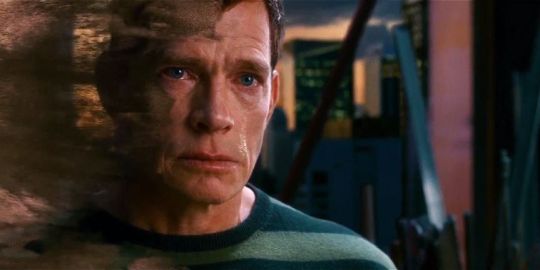
Every fan knows that Spider-Man 3 has way too many villains. None have enough room to shine or prove themselves as worthy heirs to Goblin and Ock’s legacies, but they still get some redeeming moments. In Sandman’s case, it’s his final monologue to Peter, where he confesses his guilt about the part he played in Uncle Ben’s death.
Enhanced by Thomas Haden Church’s performance, the scene succeeds in providing some much-needed closure for Peter. Sandman is less a villain and more a tragic figure of circumstance, and his confession to Peter confirms it.
8 Goblin’s First Flight

Willem Dafoe redefined what it means to be a comic book villain. His take on the Green Goblin is the perfect mix of over-the-top and seriousness, adding a sense of gravitas that overcomes the more cartoonish aspects of the role.
The character has plenty of memorable moments in the first Spider-Man movie. However, his initial confrontation against Spider-Man during the World Unity Fair will go down in cinematic history as one of the best action scenes of all time. It is fast-paced and thrilling, wasting not a single moment of its four-minute length. The Goblin gives an impressive display of his powers, proving that he will always be Spider-Man’s best villain.
7 Otto Octavius’s Sacrifice

Sam Raimi’s first two Spider-Man films succeeded because of how much they fleshed out the villains. They weren’t just CGI creations trying to take over the world, but three-dimensional characters with ambitions and limitations of their own. Spider-Man 2‘s Otto Octavius is one of the genre’s most compelling villains, one who succeeds in winning the audience’s sympathy while remaining a fearsome threat.
RELATED: 10 Things Only Comic Book Fans Know About Doctor Octopus
During Ock’s final moments, he sees the error of his ways and decides to go down with his creation. Proclaiming he will “not die a monster,” Octavius sacrifices for the greater good. Thanks to Alfred Molina’s committed performance, the moment is one of the trilogy’s most memorable, cementing Octavius as one of the genre’s most complex characters.
6 J. Jonah Jameson Saves Peter Parker
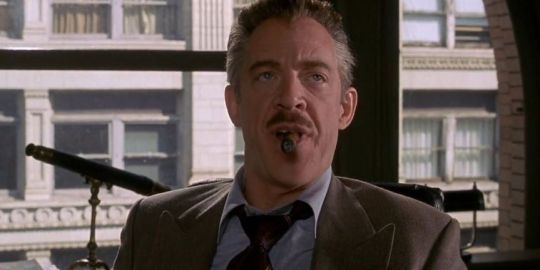
J.K. Simmons as J. Jonah Jameson is the very definition of spot-on casting. The actor took an already well-known character and translated him into the screen seamlessly and faithfully. Throughout his tenure in the trilogy, he gets plenty of comical moments, but his most memorable is his protection of Peter Parker.
When the Green Goblin blasts into the Bugle’s offices, he threatens Jameson and asks for the name of the photographer who takes Spider-Man’s pictures. Jameson refuses to tell on Peter, telling the Goblin the reporter sends his stuff through the mail. The scene shows a new and unexpected side to JJ, a glance at the empathy he works so hard to hide.
5 Uncle Ben’s Lesson
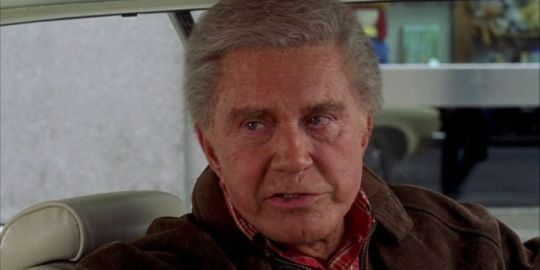
Uncle Ben’s death is one of the defining moments in Peter Parker’s storyline. It’s the first of many (many) tragedies to happen to the character, inspiring him to become a hero in the first place. Sam Raimi provides enough room for Uncle Ben’s character to develop before arriving at the inevitable conclusion.
Cliff Robertson’s heartfelt monologue summarises the essence of Spider-Man. “With great power comes great responsibility” has become one of the most enduring phrases in pop culture, adding a more profound layer to Raimi’s trilogy. And while Uncle Ben has little screentime, his presence remains throughout the entire trilogy, thanks in large part to his now-immortal words.
4 Aunt May’s Advice
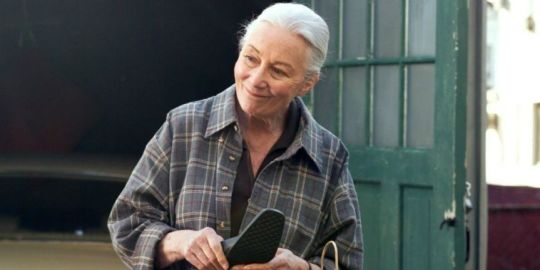
Rosemary Harris remains the most compelling and memorable cinematic Aunt May. She imbued the role with plenty of warmth and empathy, avoiding the one-dimensional approach of subsequent movies. Harris’ Aunt May wasn’t just another peripheral character; on the contrary, she was Peter’s anchor, a constant source of inspiration for both the boy and the hero.
Her role as Peter’s guide is blatantly clear during her monologue in Spider-Man 2. While she packs her things to move out from her house, she talks to Peter about the nature and importance of heroism. Her speech is the gentle push Peter needed to understand the true role of his superhero counterpart. It’s a sweet but unforgettable moment that confirms Aunt May’s importance in the friendly neighborhood Spidey’s life.
3 Goblin’s Last Flight
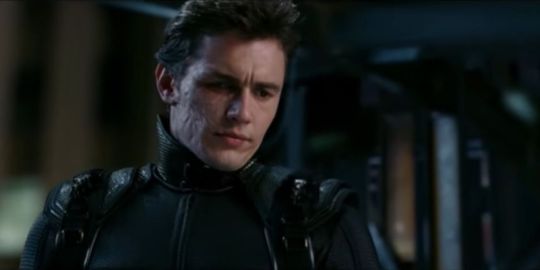
Throughout the Raimi trilogy, Harry Osborn suffers almost as many ups and downs as Peter himself. The loss of his father leaves him devastated and desperate to find someone to blame, leading to his descent into the Green Goblin persona. Alas, Harry was never his father, and he proves it at the last moment.
RELATED: 10 Most Powerful Variants Of Green Goblin In Marvel Comics
Sporting the Goblin costume, Harry goes to help Peter fight Venom and the Sandman. The two confirm their friendship, and Harry bravely dies fighting the enemies. Harry’s sacrifice continues the recurring theme in the trilogy that every victory comes with a steep price. It’s also a perfect send-off for the character and a way to restore the Osborn legacy.
2 Mary Jane’s Upside-Down Kiss
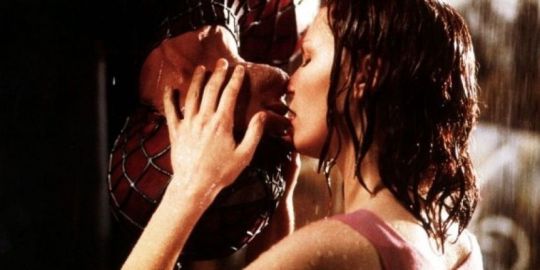
For all its strengths, the Raimi trilogy has one undeniable flaw, and that’s its treatment of Mary Jane Watson, Peter Parker’s main love interest in the comics and most movies. The character barely received any development beyond her damsel in distress role. Still, Mary Jane is a crucial figure in superhero movies; she defined the “superhero girlfriend” role for better and worse.
Out of all her moments in the trilogy, Mary Jane’s most memorable is her upside-down kiss in the rain with Spider-Man. It’s not only one of the most iconic scenes in modern cinema, but a perfect summary of MJ and Peter’s relationship. The setup may seem a tad outdated under a 2021 eye, but Kirsten Dunst and Tobey Maguire’s chemistry is so electric that fans can let go of the more dubious elements of the scene and enjoy the romantic aspect.
1 Spider-Man Stops A Train
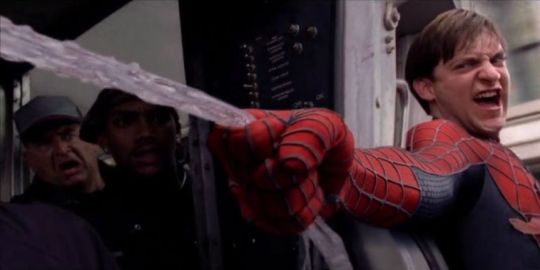
Tobey Maguire’s Spider-Man remains as beloved now as he was back then. His take on Peter Parker gained new life thanks to the internet; indeed, Maguire’s Spidey is the king of memes, from Bully Maguire to the now-iconic “I missed the part where that’s my problem.”
However, this Spider-Man remains a blueprint for cinematic superheroes, thanks to his many heroic moments on screen. None is more memorable or inspiring than his efforts to stop a speeding train in Spider-Man 2. The scene works not only as an action setpiece but as a demonstration of Peter’s strongest power: his perseverance. Peter will never stop trying, even if all the odds are against him. Spider-Man is so relatable because he makes multiple mistakes and spends his time trying to fix them. But the point is, he will always try, and the train scene is the perfect representation of Spider-Man’s essence.
NEXT: 10 Unpopular Opinions About The Sam Raimi Spider-Man Movies (According To Reddit)
#marvel #avengers #marvelcomics #spiderman #mcu #ironman #comics #captainamerica #thor #avengersendgame #marvelstudios #xmen #dc #marveluniverse #art #cosplay #tomholland #hulk #disney #comicbooks #dccomics #peterparker #tonystark #blackwidow #marvellegends #endgame #deadpool #marvelcinematicuniverse #loki #bhfyp
The post Sam Raimi’s Spider-Man Trilogy: Each Main Character’s Most Iconic Scene appeared first on undertheinfluencerd.net.
#entertainment, screenrant #tumblr #aesthetic #like #love #tumblrgirl #follow #instagram #photography #instagood #likeforlikes #s #likes #art #cute #o #girl #followforfollowback #a #tumblrboy #grunge #fashion #photooftheday #tiktok #l #photo #sad #k #frases #f #bhfyp
2 notes
·
View notes
Link
Dee Rees was waiting outside a discreet home on a quiet street in Los Angeles on a warm day in June, wearing a T-shirt emblazoned with the words “Arrest the President.” She led the way past her fragrant jasmine bushes, past a kidney-shaped pool, past a Great Dane the size of a tween into an intimate guesthouse that had been converted into a music studio. The walls were painted dark blue and nearly every spare inch of wall and floor held equipment: Fender guitars, synths, amps, speakers and keyboards. The floor was covered by so many power cords that they resembled an area rug. A recording of an off-key voice earnestly singing was playing loudly on a loop. Rees shot me a pained look. “I’m not a singer,” she said.
Nearby, standing at a microphone, the singer Santigold was humming along to Ree’s voice and mimicking the undulations until she knew them by heart. The musician Ray Brady, sitting at a computer nearby, cycled through a series of drum-machine sounds until they heard one they all liked, and Santigold started singing over it. The air-conditioner was off — it interfered with the quality of the recordings — and the air was dense with humidity that no one seemed bothered by.
Rees and Santigold were recording a series of demos for a big-screen futuristic opera titled “The Kyd’s Exquisite Follies.” The screenplay, which Rees had been working on for about a year, describes the journey of a young, black androgynous musician living in a small town who sets off for “It City” in search of stardom. “An outsized, sequin-spangled, sunglassed Cosmic Being leans into frame,” reads the description for the first scene. “It is Bootsy Collins if Bootsy was simultaneously tripping on acid, André 3000 and CBD Frosted Flakes with extra sugar.” Her mood board for the project features images from the cultural festival Afropunk and a dream cast of Erykah Badu, Beyoncé, Janelle Monáe and the R&B singer Syd. The whole thing almost sounded like a fantasy incubated deep in a Twitter thread, but Rees later told me that she was inspired to combine the cultural legacy of “The Wiz” with the grandeur of the “Star Wars” franchise to create a kid-friendly movie as canonical as her reference points. “I was like, ‘Where’s “The Wiz” for us, for our kids, for queer kids?’ ” she said.
Rees has been working toward this moment for nearly 10 years, assuredly moving from indie films into blockbuster cinema with the hope of establishing a creative freedom few directors attain. She is placing a thick spread of bets, in the hope that she will soon be able to play as boldly as she wants. Legacy, she told me, is her ultimate goal: “I want to create work that matters and lasts.”
At 43, Rees has already had the type of success that will outlast her. In 2011, she released her first feature film, “Pariah,” a lush coming-of-age drama about a young black woman named Alike grappling with both her sexuality and the world’s response to it. The movie won more than a dozen awards, including, most notably, the N.A.A.C.P. Image Award for Outstanding Motion Picture. Last year, the movie was included on IndieWire’s list of best films of the past decade, along with “Moonlight,” “Carol,” and “Call Me by Your Name” — movies that also feature queer narratives, though it’s worth noting that “Pariah” came out years before them. In 2017, she released her next feature film, “Mudbound,” a drama about the lives of a black family and a white family working the same plot of land in Mississippi in the 1940s. It garnered four Oscar nominations, including Best Adapted Screenplay, making her the first black woman to be nominated in the category. Her latest project, opening on Feb. 14 before streaming on Netflix, is her most Hollywood yet: Starring Anne Hathaway, Willem Dafoe and Ben Affleck, “The Last Thing He Wanted” is an adaptation of the 1996 Joan Didion novel about an American journalist investigating illicit arms sales to Central America during the Reagan administration. It is Rees’s attempt to demonstrate her range across scale, genre and star power.
But here in Los Angeles, her deepest professional desire was underway. Rees had already secured a producer for “Follies” in her longtime collaborator, Cassian Elwes, as well as a costume designer. Lucasfilm’s Industrial Light and Magic had signed on to create the visual effects. The next stage of the process was to produce a music sample that could be played for potential financiers, studio partners and distributors, to generate excitement for the project.
The main song she and Santigold were working on that afternoon was a duet between the hero, the Kyd, and an unseen entity offering support from afar. “The intention here is that the Universe is accompanying her, and she doesn’t realize it,” Rees informed the room, using her hands to show two entities orbiting around each other, the smaller one oblivious to the larger one. She described the song as a ballet, with choreography. The Universe is not a metaphor, she explained; it’s an actual character, a guiding light and love interest, which she imagined being played by Erykah Badu. The song lyrics included melancholic lines like “It was easier when no one was looking” and “People see you as they need you to be.”
Santi, as everyone in the room called her, finished singing one part and began recording another, in a lower intonation to indicate a different voice. She and Rees were building out the bones of a pivotal point in the narrative: The Kyd is reflecting on the isolation, loneliness and self-doubt that accompany a rise to stardom — feelings that Rees teased out from her own life experiences as a young director. They worked intently for nearly an hour this way, playing keyboard, looping drums, recording Santigold as she sang both parts, then pausing to get feedback. When Rees wasn’t feeling something, it was obvious: She remained silent but shook her head “no.” When she liked something, she bounced in her seat and offered affirmations like “that’s hot.”
Watching the two women work, I realized that Rees didn’t just have an idea for music, she had created an entire universe, writing all the songs, arranging the melodies and constructing a 3-D model in her head of the sets and landscape. To her, composing compelling songs and comedy numbers while grabbing milk at the bodega comes as effortlessly as directing some of the biggest actors working in Hollywood. Despite that, the biggest question about her career now is whether Hollywood will allow her the longevity she craves.
“I know this character,” Rees said at one point about the Kyd, though she might have been talking about her own journey as an artist so far. “That feeling of being trapped, wanting to be an artist, knowing the odds are against you and doing it anyway.”
A few weeks later, Rees was sitting in a small coffee shop in Harlem, not far from where she lives with her wife, the author Sarah M. Broom, who recently won a National Book Award for her memoir, “The Yellow House.” Rees had been stationed there for a while, talking to other regulars, reading the short-story collection “Heads of the Colored People,” by Nafissa Thompson-Spires, and working on her laptop. Rees is a minimalist: Everything about her has an understated elegance, from the twists in her hair to the black and camo Jordans that she likes to wear. That day, she was dressed in a tailored white-and-pink-dotted button-down shirt and carrying a backpack.
Rees told me that people often describe her success in the film industry as overnight, which feels dismissive of the years she spent hustling for “Pariah” and glosses over the years that she struggled to sell pilots and feature films since then. “I’ve spent 12 years slugging away,” she said. She’s quick to point out that most of her work has not made it to market.
Rees said her strategy is to work on “five things at once and see which one sticks.” Each time we talked, she was working on a new project. Once it was a television show about a black police officer in the South, set in the 1970s. Another time it was a potential collaboration with a black playwright. This is both a survival tactic designed to navigate the ever-changing tides of a mercurial entertainment industry and perhaps also a defense mechanism: better not to get too attached to a project that doesn’t get picked up. The gap years after “Pariah” taught her to be strategic.
“For me, everything still comes with a grain of salt,” she said. “I never trust if it’s going to happen until you see a grip truck pulling up.” Many black women who make a compelling, noteworthy debut never manage to make a second feature — think of Julie Dash or Leslie Harris, whose names you might not know but who are responsible for, respectively, the indie films “Daughters of the Dust” and “Just Another Girl on the I.R.T.” “It seemed like people wondered if that was a fluke,” she said about “Pariah.” After “Mudbound,” she felt that question of her directorial ability has been answered. “Now it’s just about, How much do I get to do?”
From Rees’s vantage, this is the time to be working as quickly and furiously as she possibly can to get all of her dream projects off the ground — not just “Follies” but also a lesbian horror film she plans to write with her wife and a sci-fi graphic novel that she can eventually adapt for the screen. “It’s a creator’s market,” she told me. “There are more canvases, and not just feature films. You can work online, you can make different kinds of TV. You can make your thing, and they’ll come to you.”
Rees was referring, in part, to streaming services, specifically Netflix, which financed and is distributing “The Last Thing He Wanted.” Over the past five years, Netflix has done the same for hundreds of original shows and movies, many of which are critically acclaimed and attract as much attention and accolades than the offerings from traditional movie studios. In 2019, Netflix released 60 films, and analysts estimate the company spends more than $8 billion on original content a year. “We’re not a 100-year-old studio or own intellectual property like Disney does,” Scott Stuber, the head of films at Netflix, told me. “We don’t have an archive or a library, so it’s very important strategically to get in business with filmmakers like Dee, Alfonso Cuarón, Martin Scorsese, and that is our differentiator.” Netflix’s elbowing into Hollywood has propelled other companies to follow suit, including Disney, Hulu, Apple and Amazon, all of which now produce exclusive streaming content. Netflix’s dominance is likely to be challenged in the coming years, but the company has already reshaped consumer standards, including the expectation that people can watch high-quality, Oscar-worthy first-run entertainment from the comfort of their couch.
To stay competitive, traditional studios now have to pay attention to what those services are doing and try to beat them at their own game. Many of the directors making the best material are coming from the indie world, Rees reminded me: Ryan Coogler, Ava DuVernay, Barry Jenkins. “And it’s not because of altruistic reasons but because of moneymaking reasons,” she said. “Studios are realizing it’s profitable to keep their eyes open. Netflix forced the rest of the industry to take more risks. The advantage for filmmakers is that they’re making it impossible for the rest of the industry to be dismissive or willfully ignorant, and they make the industry consider films and filmmakers that they might not have considered.”
Rees also pointed out the desire for content aimed specifically at black consumers, noting that studio heads and industry leaders were finally paying attention to the black appetite: “We’re the consumers and we’re the producers. And we’re saying: No more ‘Green Book.’ We’re not interested in that.” Though Rees tends to avoid social media and the internet, she sees them as levers for this radical change. “The gatekeepers can still modulate production, but they can’t modulate awareness in the same way,” she told me. “With that awareness comes a hunger, and it sustains a stable of artists.”
In the 1970s, Rees’s parents bought a home in a largely white neighborhood in Nashville. Her father was a police officer; her mother, a scientist at Vanderbilt University. When I first asked Rees to describe her childhood, she told me it was a “typical, boring suburban experience.” She was an only child who liked to lose herself in video games, “Garfield” comics and Choose Your Own Adventure books. The family was solidly middle class. “At the grocery store, it was my job to hold the calculator and calculate the grocery bill as we went along,” Rees recalled fondly.
But Rees’s “typical” childhood also included anecdotes about growing up adjacent to white people who questioned her family’s presence in their midst. Neighbors hung Confederate flags as curtains. Kids toilet papered their trees, prank rang the doorbell, ripped up the roses that her mother planted in a wagon wheel. People regularly tossed garbage in their yard as they drove or walked by. “It was my job to pick up that trash,” Rees said. “They always seemed to be looking at us like, ‘How can you be here, how can you have more than us?’ ” Rees’s father often parked his police car outside their home to “let people know not to [expletive] with us,” Rees said. “You were constantly bracing for it, preparing for it and trying not to let it provoke you, as it was meant to do.” These incidents, and the questions about belonging they raised, can be felt in all her films.
Rees graduated in 2000 from Florida A&M University with a master’s degree in business administration and worked in marketing for a series of health and beauty companies. Rees envisioned herself as Marcus Graham, one of the young black advertising professionals in the movie “Boomerang.” “I really thought I’d be working with people like Strangé,” she said, referring to the eccentric Grace Jones character who gives birth to a perfume bottle in a cosmetics commercial. None of the jobs lasted more than a year, but the detour was productive: She went on a commercial shoot for a client, Dr. Scholl’s, and followed the production assistant around out of curiosity. She was energized watching the work, prompting her to reconsider her career trajectory. She was accepted to New York University’s graduate film program in 2003.
Rees had never been to art school or even touched a camera. “I had no idea what I was doing,” she said. She struggled with the assignments, which often consisted of making short film experiments. “I failed and I failed hard,” she recalled. Her professors seemed to pay more attention to the better students. “It felt like an instant divestment of interest.” By the second semester, she was considering dropping out. “On the first day, they told us that ‘only two of you will make it,’ ” she said. “And I was not the one who seemed like they were going to make it. I was like, ‘This is a waste, it’s so expensive, I shouldn’t do this.’ ” At 27, she worried that she was too old to start a new career.
Rees confessed all her fears and insecurities to her girlfriend at the time, who told her: “O.K., so there’s only going to be two of you. That means you and who else?” The pep talk helped, as did the support from a few professors, including Spike Lee, who has served as the film program’s artistic director for nearly two decades. Lee was impressed by Rees’s storytelling abilities and her eye, which already felt uniquely her own — rare for anyone, but especially students. “In my experience, very few people have a style right off the jump,” he told me recently. “It’s something that you develop over time, and she had it. I never had any doubts about her being successful. I could see that she was going to do what she had to do to get where she wanted to get.”
She felt her work began to click when the assignments moved into documentary. “That is when I found myself and found my voice,” she told me. She took a trip to Liberia with her grandmother and the budding cinematographer Bradford Young. “It just felt like no one was looking, and I felt confident and was able to make the doc.” That film, “Eventual Salvation,” tells the story of her 80-year-old grandmother, Earnestine Smith, as she travels to Monrovia, where she lived for decades, and confronts the aftermath of a devastating civil war.
She loved imagining herself into the shoes of her subjects. “It helped me be a better director, because I could see that ‘Oh, if I’d gotten this shot, it would be a better dynamic, better storytelling through body language.’ ” Rees’s graduate thesis was a short film called “Pariah,” and the strength of the script landed her at Sundance Labs to incubate the short into a feature. Lee offered guidance, and Young, still unknown, drenched the film in the shimmering, richly colored patinas that he would later use in movies like “Arrival” and “Selma.”
While at N.Y.U., Rees shortened her name from Diandréa to Dee. She was establishing a boundary between herself and the world that to this day feels as if it safeguards her personal life. She was coming out as a lesbian, which at first, her parents chalked up to an “art-school thing,” Rees said. But once they realized she was truly in love with a woman, they imploded. Her mother came to New York to try to stage an intervention. Her father was embarrassed. “Nashville is superconservative and small, and I guess word was getting around,” Rees said. Neither parent spoke to her for some time, but both came to see a screening of “Pariah” in New York in 2011. The support in the room eased their worries, as did the affiliation with Sundance. “My life wasn’t a wreck, which somehow made it more acceptable for them,” Rees said.
A common theme threading through Rees’s projects is the way the world places limits on people and whether that destroys or liberates them. The moments in her movies at which her characters confront that existential dilemma are often extremely subtle, but powerful nonetheless. In “Bessie,” the 2015 HBO movie Rees made about the blues singer Bessie Smith, we see how Smith rebels against societal expectations in her sexual fluidity, hard drinking and even in her confrontation with the Ku Klux Klan at one of her shows. But the moment that is most revealing is Smith, played by Queen Latifah, sitting fully nude at a vanity, her body shining with oil, seeing herself surrounded by the trappings of fame but ultimately alone and aging. She’s facing the choices she has made and seemingly deciding whether she’ll make different ones tomorrow. In “Pariah,” it’s the spark of possibilities reflected in young Alike’s eyes as she watches a dancer slide down a pole to Khia’s pleasure anthem “My Neck, My Back” in a gay nightclub.
What is striking about Rees’s work is that even though none of her movies are explicitly autobiographical, she still finds ways to channel her life experiences into them. Embedded in “Mudbound,” for example, is the experience of her great-grandparents, who picked cotton, but it also reflects the amorality of racial violence and how a country can fight against it in a war, while still perpetuating it at home. At the center of “The Last Thing He Wanted” is a father-daughter relationship complicated by guilt and obligation, but it’s also a thriller whose main character is determined to expose government corruption.
Rees realized early in her career that as a female director working in Hollywood, she wouldn’t have the same liberty as, say, Richard Linklater or Noah Baumbach to explore the details of her life onscreen. Rees made compromises so that she could still work on the themes that interested her most. “When I first started out, I was like, ‘I’m not going to do adaptations,’ ” she told me. “I only want to do my own stuff, but I quickly realized that I couldn’t survive because of the time it takes to get people to want to do your original thing.”
In 2014, Cassian Elwes, a longtime Hollywood veteran who has produced such films as “Lee Daniels’ The Butler” and “Dallas Buyers Club,” found himself horrified after reading about the extreme gender imbalance prevalent in Hollywood movie making. Dr. Stacy L. Smith, a communications professor at the University of Southern California at Annenberg, has found that less than 5 percent of major Hollywood movies were directed by women. People of color were also dramatically underrepresented. (Those numbers have not fluctuated significantly in the years since.) Elwes was similarly shocked to read that most young white male directors make their sophomore projects not long after their first; most women of color take years. Many of them, unable to support themselves during that gap, give up.
Around this time, two young producers brought Elwes the script for “Mudbound.” He fell in love with it, and his mind drifted to “Pariah,” which he’d seen at Sundance. Elwes sent Rees the script. A few years earlier, Rees had wanted to adapt the novel “Home,” by Toni Morrison, to explore the paradox of freedom for black Americans returning home from overseas; now she realized she could inject that desire into “Mudbound.”
“He was the first producer who was just like, ‘It’s yours,’ ” Rees recalled. “It wasn’t exploitative or like you should be grateful. He was like, ‘Whatever you want to do, let’s work it out.’ He’s believed more in me than some producers of color.”
A movie like “Mudbound” could easily be saturated with simplistic Hollywood narratives about the resilience of black people and the restorative power of interracial friendships. But Rees was not afraid to show a world where some white people are evil and none will save the black characters. Rees first impression of the script was that it was “a little too sweet.” It featured music as the balm easing tension between the two families. Rees wrote more scenes explicitly featuring the Jackson family, including one around a dinner table where they discuss their dreams of purchasing their own parcel of land, only to be interrupted by the white landowner, who demands they come unload his truck. The film finds its own emphatic language for the spectral horror of white violence in America through quiet vignettes: The tight face of a well-dressed black man, riding in the back of a white man’s dusty pickup truck. The wet and swollen face of a white woman sobbing into the arms of a black matriarch, whose resignation and fatigue can be read in the set of her mouth.
Rachel Morrison, the film’s cinematographer, who received an Oscar nomination for the film, said she was drawn to Rees’s ability to “put the audience squarely in the main character,” she told me. For example, when filming Laura, a woman at a loss for who she is in the world, the shots feature her petite, wiry body dwarfed by the soggy terrain and gaping blue sky. Rees was “uncompromising in only the best ways,” Morrison said, in a tone rich with admiration. She recalled an instance where Rees wanted a shot looking through a screen door, from the outside world into a dark home. “It was a ton of work, balancing the bright sun and dark shadows, but I was like, ‘If it’s worth it to you, I’ll do it.’ ” It was worth it to Rees. Morrison spent close to an hour manipulating the set to capture what would amount to seconds of screen time. When Morrison saw the final cut, she realized the elegance of the shot and how beautifully it articulated the difference between the two families and the worlds they inhabit. “It’s one of my favorite shots in the film,” she said.
After they finished “Mudbound,” Rees told Elwes that she wanted to adapt the Joan Didion novel. He knew Didion’s agent and was able to option “The Last Thing He Wanted.” “We took it around to all the studios, and no one would deal with it,” she said. “Netflix jumped in and saved it. But it was hard in that way. You think because it’s Joan Didion, like, of course — but nope.”
Rees struggles not to take the studios’ lack of interest in her work personally. When I asked her how she rationalized their indifference, she took her time answering, clearly weighing how much of her inner thoughts about Hollywood she wanted to air in public, staring into her coffee all the while. “When stuff doesn’t make logical sense, to me, I go to a place where there’s only one thing that can explain this. You know what I mean?” She paused again, fiddling with her latte. “It feels like a double standard, and the double standard to me is race.”
I asked her how she coped with being so demonstrably talented as a filmmaker and yet feeling thwarted in her efforts at the same time. “The only refuge I have is to do more work, to be relentless and keep making and making, and hopefully, eventually I won’t have to continue to prove that I have the capabilities.” She felt this deeply when “Mudbound” was passed over by major studios, even though it resembled a Birney Imes photograph come to life and featured mesmerizing performances by Carey Mulligan and Rob Morgan. It eventually sold to Netflix, reportedly for $12.5 million, the largest deal to come out of Sundance in 2017. “I’ve learned to go where the love is and work with who wants to work with you,” she told me. “The thing you’re up against is not new. Since first grade, the moment you enter school, you’re up against racism. But it’s still stunning sometimes.”
What remains striking about Rees is that these challenges haven’t muted her ambition. Elwes repeatedly highlighted it. “It’s gigantic,” he said, marveling. “She could be knocking out independent movies all day long if she wanted to.” But instead, with something like “Follies,” she is trying to create a pop-cultural empire. “She’s building a world, and right now in Hollywood, most people are just making another version of a comic book or a sequel or a remake,” Elwes said. Her fearlessness and talent are why he immediately agreed to help her produce and finance her sci-fi opera after she floated the idea by him in a text message. He has been hustling to raise the $80 million or so that she needs to pull it off. “It’s not a slam dunk,” he said, “but whoever takes the risk will get the reward.”
Toward the end of our meeting at the coffee shop, Rees told me shyly — a rare mode for her — that her biggest dream is to work on a major feature-film trilogy, something even more audacious than “Follies.” “I want to have a world with a black woman at the center of it, who ends up leading a rebellion,” she said. “I want to create a whole new world rather than color in somebody else’s.” The trilogy Rees wants to build takes place in a dystopic time, a hellscape devastated by climate change and out-of-control social media where people have to meet a minimum “credit” rating in order to have a decent quality of life.
Rees hopes that “The Last Thing” will be a bridge between her past work and her larger ambitions. Unlike her previous films, “The Last Thing” is a fast-paced political thriller with car chases, shootouts and body counts that includes tight close-ups and impressionistic landscape shots. The effect is claustrophobic and dizzying — a departure from Rees’s previous, more linear work — and yet the audience remains, as Morrison reflected, squarely in the perspective of Elena McMahon, the journalist at the center of it, played by Anne Hathaway. As McMahon loses her moral compass, the viewer becomes disoriented, too, and unable to keep up with the revelations, which, at Sundance, caused many critics to pan the movie.
When I spoke with Rees by phone from Sundance, right after the first reviews came in, she sounded sanguine. Her film had been “trashed,” she said, “but I still believe in it.” Then her voice perked up as she proceeded to tell me the details of a few still unannounced deals she had inked since we last saw each other. From her perspective, it seemed, the critical response was a blip in what she plans to be a long career.
Rosie Perez, who portrays a photojournalist in “The Last Thing,” told me that the day she arrived on location in Puerto Rico to shoot the film, she immediately noticed Rees’s sharp intelligence but found her aloof. “I wasn’t sure if I was going to connect with her,” she said. When it came time to work, Rees was meticulous but hands off. She set up the scene, positioning the camera with her own hands at times, and then stepped away. “It freed us up to just act,” Perez said. “She lets you do your thing. But you have to trust that she’s doing hers, too.”
Once, after a scene, Rees called cut, and Perez asked Rees if she was sure they got the shot. “She looked at me and said, deadpan: ‘I wouldn’t have moved on if we didn’t.’ ” Perez, deep in recollection, let loose that famous laugh from deep in her nasal cavity. “I was like: ‘Got it. Let me shut the [expletive] up.’ ” Her admiration for Rees was cemented in that moment.
But that wasn’t all she got from Rees, Perez told me, recalling a scene in which she and her co-star, Anne Hathaway, are running to catch a plane, dodging gunfire. “Anne is running like Catwoman, sprinting toward the plane,” Perez said. “I felt like the older lady trying to keep up.” She mentioned this to Rees, who replied, “Well, that’s your character, isn’t it?” At first, Perez’s ego was bruised. But later, Rees told her, “I hired you because you’re a kick-ass actress and also because you have the courage to look like a grown-ass woman.” At the time, Perez was splitting her time on the set of the second season of Spike Lee’s “She’s Gotta Have It,” where she was guest-starring as Mars Blackmon’s mother. Lee didn’t want Perez to wear a lot of makeup, and Perez initially balked. But her time with Rees adjusted her priorities: “I walked onto his set, and I was like ‘O.K.’ ” Working with Rees, she said, “gave me the confidence to do that.” That, she said, was Rees’s gift. “You have to let her be who she is, in order to see what she is trying to give you.”
89 notes
·
View notes
Text
15 for ‘19: My Favorite Films of 2019
Here are my top 15 movies of 2019 and my brief thoughts on each or better yet, my attempts to say more than just “this movie is really good and you should check it out.”
15. A Marriage Story

Stellar performances by Adam Driver and Scarlett Johansson and the rest of the cast. Quite realistic depiction of a married couple going through a divorce.
14. Rambo: Last Blood
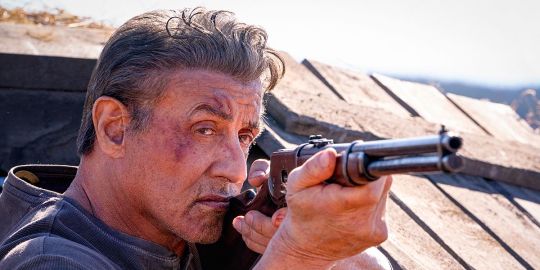
I like how this film changes the formula a bit from the past several Rambo movies by having Rambo at home in America and not sent on a one-man-army mission to a foreign country. Stallone gives another great performance as John Rambo even in his old age, and I would like to see him continue the franchise.
13. Us

Creepy, edge-of-your-seat thriller! Interesting commentary on the differences between social classes. I actually have vacationed in Santa Cruz where the film takes place so it was cool to see it on screen!
12. The Peanut Butter Falcon

Shia LaBeouf (who has not starred in anything significant for awhile) gives a good performance. Heartwarming story and fun to watch! There needs to be more “small” movies like this that are just about the adventures of “normal” people and not big spectacles all the time.
11. Once Upon a Time in Hollywood

Tarantino brings the 1960s alive by perfectly recreating the look and feel of the era! When I first saw the movie, I wasn’t sure what to think of it, but after dwelling on the movie since I have come to realize it is a brilliant film.
10. The Two Popes
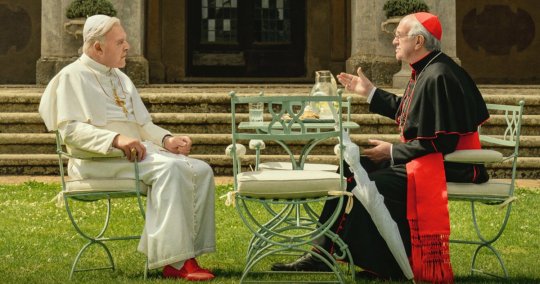
Incredible performances by Anthony Hopkins as Pope Benedict XVI and Jonathan Pryce as Pope Francis! I like that the film displays the religious ideological differences between the two popes and presents history of Pope Francis I did not know.
9. Richard Jewell
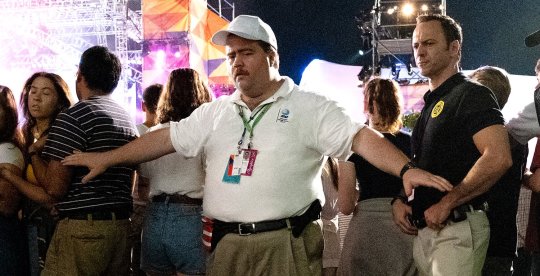
One of director Clint Eastwood’s best movies in recent years (it’s incredible he able to still produce such great work at nearly 90 years old). Intriguing true-life story I knew little about before the movie!
8. El Camino: A Breaking Bad Movie

An immensely satisfying continuation to the Breaking Bad series! Aaron Paul gives yet another fantastic performance returning to the role of Jesse Pinkman. Also, this film marks legendary actor Robert Forster’s final performance; may he rest in peace. I am anxious to see how the events of this film will impact Better Call Saul and future entrees in the universe.
7. Under the Silver Lake

I really like how the movie is essentially a modern Alfred Hitchcock thriller with similar style, tone, and music to films like Vertigo and The Man Who Knew Too Much. Andrew Garfield gives a good performance as well. I would like to see more cryptic mystery thrillers like this film.
6. The Man Who Killed Don Quixote
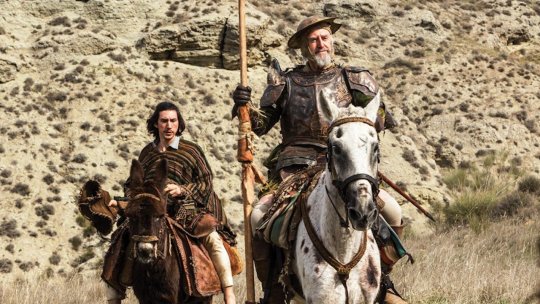
Yet again more great performances by Adam Driver and Jonathan Pryce. I myself am an independent filmmaker so I gravitate towards films like this one in which filmmaking is a major plot point. Filmmaker Terry Gilliam (Monty Python, Brazil, Fear and Loathing in Las Vegas) continues the style and tone of his previous work, so if you like his films, definitely check this out. The film had been in development for over 20 years so it is wonderful to see it finally completed.
5. Toy Story 4
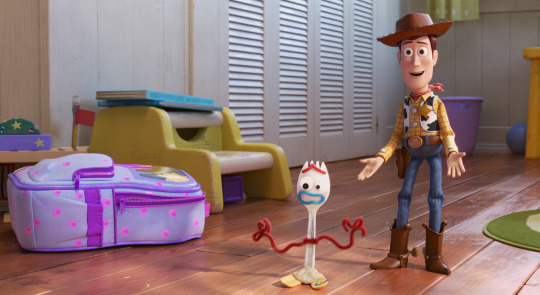
I have followed this series since I was 2 years old, so these films are very important to me. Toy Story 4 is a very satisfying conclusion to the series (assuming this is the last one)! It was so emotionally enthralling when Woody and Buzz decide to part ways in the end. I also like how the film continues the series’ tradition of pushing the boundaries of computer animation with this film having the most realistic CGI I have ever seen.
4. Doctor Sleep

When this movie was first announced, I screamed “No, please don’t ruin the legacy of Stanley Kubrick’s The Shining!” Boy, was I happily surprised to find Doctor Sleep to not only be a great movie but one that enhances the original film! I love how the film is stylistically identical to Kubrick’s Shining in many parts and that it uses spot-on lookalike actors instead of resorting to uncanny-valley CGI replacements (i.e. Carrie Fisher in Rise of Skywalker). When this movie eventually comes to home video, I want to watch it back-to-back with The Shining to see the “complete” work.
3. Joker
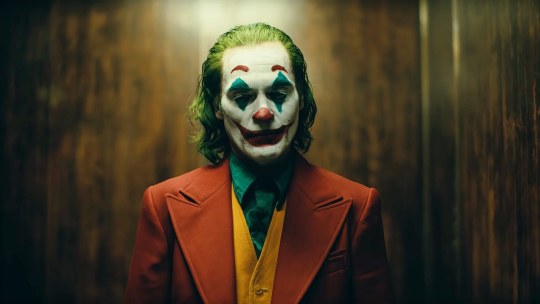
Joaquin Phoenix deserves awards for best actor for his powerhouse performance as The Joker! I also like that the film reminds audiences of the Occupy Movement since politics/media in recent years has tried to make everything “ant-Trump” instead of focusing on issues related to income inequality, which I believe is a more realistic problem our nation needs to address.
2. Parasite
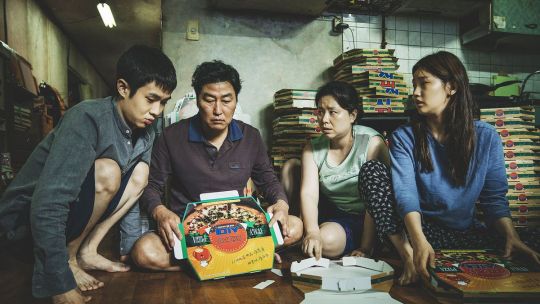
One of the best modern Asian films I have ever seen! Really captures how desperate people can get to improve their livelihood and how people of different socioeconomic classes perceive life.
1. The Lighthouse

Willem Dafoe and Robert Pattinson give incredible performances as keepers of a lighthouse in the late 1800s who gradually descend into madness. The cinematography is incredible with its use of black-and-white and 4:3 aspect ratio to make the film appear like it was shot in the era in which it takes places. Movie also is rich in symbolism and esoteric meanings that I will need watch again and again to pick up on. Definitely best film of the year!
#movies#movie review#film#top 10 lists#best of#best of 2019#lighthouse#parasite#joker#joaquin phoenix#doctor sleep#shining#stanley kubrick#toy story#adam driver#man who killed don quixote#jonathan pryce#under the silver lake#andrew garfield#richard jewell#clint eastwood#breaking bad#el camino#two popes#anthony hopkins#once upon a time in hollywood#quentin tarantino#leonardo dicaprio#brad pitt#peanut butter falcon
108 notes
·
View notes
Text
An Opinion on Spider-Man Through the Years
So if you know anything about me, you know that I’ve always considered myself as a Spider-Man expert. Since I was a little girl, I’ve read every issue of the original Spider-Man comics, seen all the animated shows, and became obsessed with the live action movies. Today, I decided to write about each of the live-action spider-men since 2002. Hope y’all enjoy the read that in all honesty is just a bunch of rambling.
Starting off with Sam Raimi’s original trilogy, Tobey Maguire has launched me into extreme nostalgia after recently re-watching his movies. That’s part of the reason I wanted to write this. Anyway, at 20 I still feel the same sense of excitement I first felt when the movies came out. Although it’s hard to believe that Tobey was playing a high schooler now, when I was younger it definitely made sense.
In my opinion, Tobey’s Peter Parker is the most comic accurate, all the way down to the intelligence and the nerdiness. His Spider-man, however, isn’t the most accurate. He doesn’t have as many quips and although his confidence does grow after he gets his powers, he doesn’t play into it the way that the comics do.
The Osborne vs. Spidey story-line has, without a doubt, always been my favorite. The way that they wrote it out in the original trilogy, even down to Harry seeking revenge for his father, is amazing. Not to mention that Willem Dafoe as Norman is always a win. Doc Oct is also a favorite of mine (which is why Spider-Man PS4 is one of my favorite games of all time) and the way that he was portrayed, the arms slowly taking over his sanity, had me on the edge of my seat. Spider-Man 2 is the first movie I remember seeing in theaters and I’m definitely glad that’s the case.
One thing I hated was the fact that the web wasn’t from a web shooter and instead just- came out of him? But the montage of him figuring out how to make the webs come out is still hilarious and will always be my favorite.
Also J.K. Simmons as J. Jonah Jameson is the most accurate casting in the world.
We don’t talk about Spider-Man 3.
Okay, okay. All I can say is Sony butting their heads into the movie was mistake #1 and mistake #2 was hiring that dude from That 70s show to play Eddie Brock. That man can’t act. Also Emo Peter Parker? I ain’t about that.
Moving on to The Amazing Spider-Man. I know that it was widely hated, but I can confidently say I enjoy the different take that Marc Webb (lol puns) took. It wasn’t as camp as Raimi’s but it was a slightly darker take. The popular consensus is that Garfield was too “cool” for Peter but in all honesty it was a front, and he was still very smart and very awkward especially around Gwen. He played into Peter well, just with a bit of added confidence but the only thing that was missed was Peter slowly gaining confidence. Instead he just had it from the beginning.
I also enjoyed the fact that we got to know what happened to Peter’s parents, and in the second film we got to learn just how much they loved him.
Andrew Garfield’s Spidey is the most accurate of the three, in my opinion. He has the quips, the confidence, and the suit. It all worked out very well for him, and if only he was given slightly better material I think that he could have been the best Spider-Man.
Lastly, Tom Holland. MCU Spider-Man is amazing, don’t get me wrong, but he’s not my favorite.
He gets dangerously close to side-kick territory, and yeah while he does work for Tony Stark very briefly in the comics, that was years after he had already been established as a hero. Tom plays Spider-man very well, but it’s absolutely nothing like any of the comics.
He’s the youngest iteration (which makes sense, he was supposed to be 14 in Civil War) but he plays into like he’s a child. I enjoy the father-son relationship that Tony and Peter have, and I like that Tony could mentor him but I just like the established and confident Spidey more.
Maybe that’s because these movies came out while I was already an adult and I see him as so young, but my point still stands. He’s still an amazing Spider-man and being the first Spidey to play along-side other heroes was a big job to take on and Tom did it with ease.
With that being said, I like him more that Garfield’s because he actually looks like he could be a Spider-Man, meanwhile Andrew seemed miscast. Just a touch.
Now I’m not saying that Tom is a bad actor, because he’s not. He’s acting with the material provided and he’s doing amazing at it (I even briefly talked about it with him at FanX). He said that he had big shoes to fill, and I told him that he was doing great.
I also think Jon Watts could have broke the MCU mold much like Taika Waititi did with Ragnarok but it was a missed opportunity :/
TLDR; each spidey had their goods and their bads. If you actually read this, thank you for listening to my rambling.
#also i know i'm a bucky blog but like#i still love spidey#always have and always will#anyway#love you all#spiderman#tobey maguire#andrew garfield#tom holland
11 notes
·
View notes